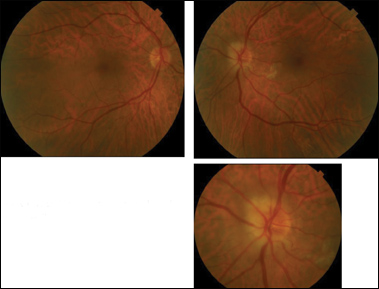PUBLICATION EXCLUSIVE: Woman presents with spontaneous visual field loss
The New England Eye Center was consulted on a 61-year-old woman with a history of recently diagnosed left-sided greater than right-sided internal carotid artery aneurysms when she presented urgently to the Tufts Medical Center Emergency Department with spontaneous inferotemporal visual field loss noticed upon awakening. At the time of consultation, she additionally described a 3- to 4-week history of transient “black spots and flashes” that occurred in both eyes during coughing episodes that lasted roughly 1 minute. Otherwise, she reported neither pain nor diplopia and believed her remaining visual acuity to be at baseline.
A CT of the head and MRI/MRA of the head and neck were performed with concern for enlargement of or embolization from the previously identified aneurysms. The imaging showed stability of the lesions bilaterally. Of note, the patient had recently been started on aspirin and clopidogrel after identification of these aneurysms and was fully compliant with this regimen.
Examination
On examination, best corrected visual acuity was 20/20 in both eyes. There were full extraocular movements with a 1-mm anisocoria (left greater than right). The left pupil was sluggish in reaction to light with a 1+ afferent pupillary defect. Color plates were full, although visual fields by confrontation revealed an inferotemporal constriction from 3 to 6 o’clock in the left eye. Applanation IOP was within normal limits in both eyes. Slit lamp exam revealed an unremarkable anterior segment in both eyes. Dilated fundus exam, while unremarkable in the right eye, demonstrated pallid disc edema and whitening of the nasal macula in the left eye (Figure 1).

Images: Constans J, Hedges TR
What is your diagnosis?
- Click here to read the full publication exclusive, Grand Rounds at the New England Eye Center, published in Ocular Surgery News U.S. Edition, April 10, 2017.
